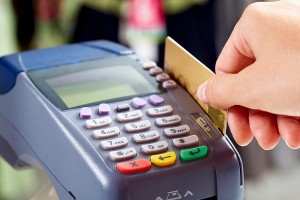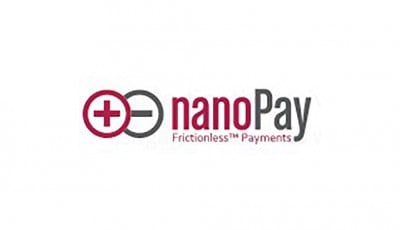A Conversation with Laurence Cooke, CEO of nanoPay
 When it comes to electronic transactions, security is key. Today, most electronic payments require credit and debit card numbers, resulting in identity theft, hacking and fraud. These are serious concerns for merchants and customers alike. For many, the convenience of electronic payments comes with the knowledge that their information isn’t always secure.
When it comes to electronic transactions, security is key. Today, most electronic payments require credit and debit card numbers, resulting in identity theft, hacking and fraud. These are serious concerns for merchants and customers alike. For many, the convenience of electronic payments comes with the knowledge that their information isn’t always secure.
 Payment system startup nanoPay has addressed these concerns by removing the need to transfer sensitive data during transactions. Customer payment information is converted into tokens, which are meaningless to anyone trying to intersect them. I had the pleasure to speak with Laurence Cooke, CEO of nanoPay, regarding the company’s unique offerings, today’s digital currency landscape and how he sees digital currencies will shape the economies of the future.
Payment system startup nanoPay has addressed these concerns by removing the need to transfer sensitive data during transactions. Customer payment information is converted into tokens, which are meaningless to anyone trying to intersect them. I had the pleasure to speak with Laurence Cooke, CEO of nanoPay, regarding the company’s unique offerings, today’s digital currency landscape and how he sees digital currencies will shape the economies of the future.
Though Cooke has been involved with digital currencies and payment systems for several years, he started off in telecom. “[I spent] many years in telecom, both in Europe and in Canada. I worked with two telecom companies in Canada. I worked with Shaw for a while and I ran Bell Mobility, which is Bell Canada’s rival corporation as well.”
It was there that Cooke started paying attention to digital payments. “I originally started looking at mobile payments in 1999. We were looking at what they were doing in Asia, where they seemed to be miles ahead. The experience I had was with telecom in Japan and it was extraordinary what they could do.”
“When I was at Bell I was very frustrated that we were unable to participate in the value chain in any way – even though we were a big operator with lots of customers – or [without] the capabilities that were required. The main thing [was] no one could ever agree on whose customers they were, [for example] whether they were going to be a bank customer… and what I said at the time was, if we want to participate in mobile payment or mobile money, what we have to do is give access in part to every bank in Canada without control… we’ve got to give it away for free. So that never happened and that’s it. I [guaranteed] that ten years from now we [wouldn’t] have a single customer if we don’t take that approach.”
Founded in 2012, nanoPay is a payment platform that “streamlines checkout and creates Frictionless shopping experiences,” according to their site. “What we [created] was a little startup in retail that will allow you to make any payment ecosystem, including any digital cash, including bitcoin or anything else that might come along,” said Cooke. Securing this ecosystem is done through nanoPay’s tokenization framework, which turns customer and agnostic payment information into single-use transaction tokens. “When I say payments with agnostic, it could be a credit card, debit card, PayPal, bitcoin, it doesn’t matter; it’s all represented in a token,” Cooke explained.
Keeping in line with its Frictionless shopping experience philosophy, nanoPay allows merchants to use their platform to create loyalty reward programs. “Within the ecosystem, the currency can be… we are focused on fiat currencies, so currencies that are backed by governments, but you could set up any other kind. Let’s say you wanted to set up a loyalty rewards currency, you could literally do that in a heartbeat. The value is moved in near real time and implemented in near real time.” nanoPay’s API is available for developers to incorporate the platform into their application or website.
Among the other perks of nanoPay is the ability to complete transactions without an internet connection. “If you had [your device] online and then had to go offline or if [you] have any sort of IP, you can actually do an offline transaction,” Cooke said.
Of course, security is only one part of how digital payments are changing the way we bank and use money. Our conversation moved to the relationship between central governments and digital currencies. Cooke stressed that, despite bitcoin’s original intent to operate outside of any government control, he believes the governments and central banks need to play a role with digital payments.
“I’m not a revolutionary guy that’s anti-central bank; in fact, I’m very much in favor of the central bank. I don’t think you can really make any digital cash work without the support of the central bank.”
Cooke had a lot to say about today’s currency landscape, including how some nations and entities are moving away from certain physical currencies. “In Canada we no longer have the penny and in many countries they’re talking about [getting rid of high dollar bills],” he explained. “They talk about getting rid of the one-hundred dollar bill, the one thousand Swiss Franc and the thousand U.S. dollar and all the other higher [bills]. Cash money is disappearing on both ends of the spectrum. The Royal Canadian Mint is responsible for making coins for over 20 countries around the world, and they had developed a digital cash platform.”
North America has yet to embrace digital payments to the same extent. “In terms of U.S. and Canada, we’re quite far behind Europe in terms of our regulatory framework to deal with things like electronic money or digital cash.”
Within the United States, Cooke expressed his thoughts on the severe punishments people face if they don’t adhere to the exact regulations in place. “The patchwork of regulation, there’s a lot of it and it’s very onerous and if you get it wrong there are severe consequences. The consequence to misunderstanding some of the regulations, and it [varies] state by state, is you go to jail. The consequences in most other countries is you get a slap on the wrist or maybe a fine or maybe somebody explains that you completely misunderstood the regulation… in the U.S. the consequences are significantly more dangerous at a personal level. [The U.S.] hasn’t really fostered an environment where you can take basic risks and get out there.”
Government regulations aside, animosity exists between U.S. banks and electronic payment companies. “Lot’s of companies come here and think ‘banks are terrible, banks are old, banks are slow… we’re gonna innovate and we’re gonna eat their lunch.’ The bank’s reaction is ‘we’re not gonna play nice with these guys, they saying we’re old and slow and they’re gonna eat our lunch. So we’re not gonna give you bank access… we’re not gonna let you connect into our ecosystem.'”
On the other hand, Europe has regulations in place, such as the updated Payment Services Directive (PSD2), which makes it easier for payment companies to interact with banks. “PSD2… means that all banks basically have to have an API allowing payment companies to complete payments using their ecosystem,” Cooke explained. “The regulators have done a really good job… but also relieving the pain points and allowing other parties to work with the banks.”
There are also countries that have the concept of a regulatory sandbox. “[Some countries] will allow companies to experiment – as long as it’s not at a significant scale – and actually do things that normally would be considered outside of the regulation. By doing that, you get to really start the innovation [process]. There are some places around Europe and Asia and even in Africa where they’ve developed these regulatory sandboxes that allow you huge degrees of freedom… and I think that is a really good way forward.”
We wrapped up our conversation discussing the mainstream perception of bitcoin and other cryptocurrencies. If there’s one thing we’ve seen, it’s how governments and companies alike are embracing the potential of digital payments and blockchain technology. “I think there’s many legitimate use cases of blockchain technology where you can do good things and not be anti-establishment.” nanoPay is just one example.
Image credits:
Card being swiped – Source
nanoPay logo and Cooke’s photo – Courtesy of nanoPay via PR firm Uproar













